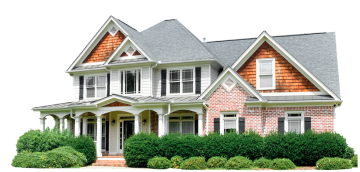Quick Summary
In the UK, an open-plan loft conversion design transforms unused roof space into a bright, free-flowing living area that feels open and elegant. It usually costs between £40,000 and £75,000, depending on size, roof structure, and interior finishes. With smart storage and natural lighting, an open-plan loft can increase your property’s value by 10% to 20%, making it both a stylish and long-term investment.
If you’ve ever dreamed of transforming your attic into a bright, airy space that feels both modern and relaxing, then an open plan loft conversion might be exactly what your home needs.
An open concept loft design removes unnecessary walls, letting natural light flow freely and making even small spaces feel larger. In 2025, open plan lofts have become one of the most popular home improvement projects in the UK that blends practicality, style and value.
So, if you are wondering what an open plan loft conversion involves, how much does it cost and what fire safety regulations apply, this complete guide will answer all your queries.
What is an Open Plan Loft Conversion?
An open plan loft conversion is a design that turns your unused attic into one large, flowing space without dividing walls. Unlike the traditional conversion with separate rooms, this layout embraces openness, allowing you to create a multifunctional area, such as a bedroom with a seating zone, or a studio that doubles as a workspace.
The idea is to maximise light and space, create a sense of freedom and flexibility. It’s especially popular in Victorian terraces and semi-detached homes, where natural light can often be limited on lower floors.
If you are imagining a minimalist modern loft or a cosy, Scandinavian-style retreat, an open concept loft offers endless possibilities for personal expression.
Benefits of an open plan loft conversion
Choosing an open plan layout for your loft conversion comes with a range of benefits, both aesthetic and practical. Some of them are mentioned below:
Brings natural light
With fewer walls blocking light, daylight can travel across the entire loft. Adding large deluxe windows or skylights makes the space bright and uplifting.
Find design flexibility
You can define zones with furniture rather than walls, for example, a sleeping nook, a study corner or a lounge area, allowing you to adapt the space over time.
Sense of space
Even small lofts can feel large and welcoming. The open plan design removes the boundaries and helps the area feel less congested and confined.
Modern aesthetic
Open concept lofts give homes a contemporary and a clean look. It’s perfect for homeowners who live in minimalist interiors or industrial style spaces.
Adds property value
An open plan attic conversion often attracts buyers looking for modern homes with spacious layouts. It’s an upgrade that can significantly increase your property’s market appeal.
Stunning Ideas for Open Plan Loft Conversion
When designed well, an open plan loft can become the most inviting and versatile space in your home. It’s all about creating flow, where light, comfort and style come together without the need for walls or partitions. Here are a few inspiring open plan loft conversion ideas to help you imagine your new space:
Bedroom with lounge area
A king size bed paired with a small sofa or reading chair instantly give you a luxurious, hotel-like charm. Keep the decor light and neutral to make the room feel spacious and let the light from skylights set the calm, relaxing mood. You can even add a dressing area or freestanding tub for an indulgent touch.
Open plan home office loft
For those working from home, an open plan loft can be the perfect escape from household noise. Just place your desk near a window for natural light, and use built-in storage to keep things neat. Soft lighting and a clean layout help maintain focus while a small sofa or armchair offers a spot to recharge during break.
Studio-style loft apartment
If you love multifunctional spaces, try a studio-style design that blends sleeping, lounging and dining in one open layout. Use rugs or open shelving to subtly divided zones without blocking light. Exposed brick walls, timber beams or metal details can add a stylish, urban look while keeping the atmosphere cosy and practical.
Family entertainment space
Another option to upgrade your loft is to transform it into a fun, open area for the whole family. Include a comfy sofa for movie nights, a children’s play zone and even a mini home cinema or games corner. The open plan design makes it easy to stay connected, a perfect option to enjoy family time and weekend relaxation.
Open plan loft with feature staircase
A striking staircase can completely elevate your loft design. Consider floating wooden steps, sleek glass balustrades, or modern metal frames to create elegant focal points. Besides connecting levels, an open staircase enhances the sense of flow and allows light to travel freely throughout the space.
Learn More About Dormer Loft Conversion here
What are the Key Design Considerations?
Designing an open plan loft requires careful planning to balance openness with functionality. Here are the key points to consider:
Structural support
Your loft floor will need strengthening to handle new loads. A structural engineer ensures that beams and joists meet building standards.
Layout planning
Without walls to guide the space, furniture placement becomes vital. Define areas using rugs, partitions or lighting changes.
Lighting
Make the most of roof windows, dormers, or even glass balustrades to bring in daylight. Combine with layered artificial lighting for evenings.
Sound and privacy
Open space can echo, so consider acoustic insulation or soft furnishings to keep the room comfortable.
Ventilation and heating
Ensure your loft remains well-ventilated and energy efficient. Underfloor heating or slimline radiators can help maintain even temperature.
A qualified architect will help you achieve all of this without losing the charm or flow of your open concept loft.
Fire Safety and Building Regulations for open plan loft
One of the most important topics when planning an open plan loft conversion is fire safety. Because these conversions often connect directly to lower floors via open staircases, they must comply with strict loft conversion regulations.
Here are the key rules you’ll need to follow:
Fire protected escape route
Building regulations require a safe escape route from the loft to an exterior door. If your new space connects directly to an open plan area below (like a kitchen or living room), you may need additional fire protection measures.
Fire doors and smoke alarms
You’ll typically need fire-rated doors on the escape route and interlinked smoke alarms on every floor. These alarms must be mains-powered with battery backup.
Sprinkler or fire curtain system
In some open plan lofts, especially those with open staircases, a sprinkler system or automatic fire curtain can be used as an alternative to fire doors.
Fire resistant materials
Walls, ceilings, and floors must have adequate fire resistance to contain flames and protect the escape path.
Professional guidance
Always have your architect and builder review your design with local building control. They’ll help ensure your loft conversion fire regulations open plan layout meets all safety requirements.
Learn More About Terraced House Loft Conversion Here
Role of architects and structural engineer for open plan loft conversion
An open plan loft is more than just a design choice, it’s a technical project that relies on both creative and structural expertise.
Architect’s role
Your architect will create a design that uses space efficiently while meeting fire, light and ventilation requirements. They’ll help position windows, plan the staircase and balance aesthetics with building regulations.
Structural’s Engineer role
Removing walls and supporting an open layout demands precise calculations. A structural engineer ensures your floor and roof can safely bear the load, design supporting beams and advises on materials and layouts to prevent snagging or instability.
Together, they make sure your open plan loft conversion is both visually stunning and structurally sound, giving you mental satisfaction from design to completion.
What is the average price of Open Plan Loft Conversion?
| Type of open plan loft conversion | Typical cost range (UK) |
| Budget open Plan Loft | £35,000 – £45,000 |
| Standard open plan loft | £45,000 – £80,000 |
| Luxury open concept loft | £80,000 – £100,000+ |
Additional cost factors
| Factors | How it affects price |
| Size & roof type | Large or complex roofs increase structural and design cost |
| Location | London & nearby areas can cost 20/30% more |
| Finishes & Features | Staircases, skylights, or an ensuites can add several thousand pounds |
| Fire Safety System | Open play layouts often need upgraded fire doors or sprinklers, adding extra cost. |
Final Thoughts
An open plan loft conversion is a perfect way to breathe new life into your home. It creates lights, space and character, all in an area that might otherwise go unused. From stylish open plan staircase designs to creative studio layouts, this modern approach to loft living combines practicality with elegance.
Just remember that careful design, strong structural planning and compliance with fire regulations are key to success. With the right professionals and a well-thought-out plan, your open plan loft can become the heart of your home, a bright, inspiring space you’ll love for years to come.
FAQ’S
Yes, an open plan loft conversion can increase your property’s value by 15-20% in many cases. Buyers are drawn to modern, spacious layouts that feel bright and welcoming.
Absolutely, as long as it meets the building regulation standards. With the right design, safety measures, and the professional approach you can surely enjoy a beautiful open space that’s both safe and practical.


 Describe your needs
Describe your needs
 it only takes 30 seconds
it only takes 30 seconds